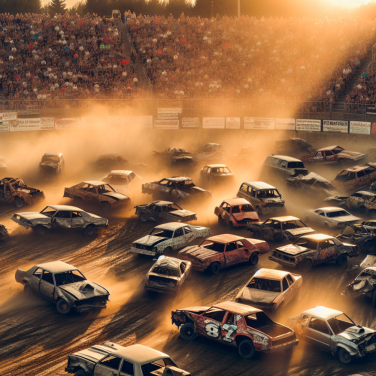Adrenaline on Ice: The High-Speed World of Competitive Bobsledding
Adrenaline on Ice: The High-Speed World of Competitive Bobsledding
Competitive bobsleigh, more commonly known as bobsledding in North America, is a winter sport that combines speed, power, and precision like few other athletic endeavors. The sport's origins date back to the late 19th century when the first bobsleds were built in Switzerland. Since then, it has evolved into a highly sophisticated and thrilling sport that captures the imagination of millions around the globe, especially during the Winter Olympic Games.
The heart of bobsledding lies in the pursuit of the fastest time down a narrow, twisting ice track, with teams or individuals racing against the clock. A typical run begins with a dramatic and explosive start where athletes push the sled, gaining as much momentum as possible before jumping in. The start of the race is critical; a mere fraction of a second can be the difference between standing on the podium or not.
Once the team is in the sled, the driver takes over, steering through a series of high-banked curves and straights at speeds that can exceed 150 kilometers per hour (93 miles per hour). The forces exerted on the team are immense, with athletes experiencing up to 5 G's in some of the sport's tightest turns. It's a high-stakes game where skill, teamwork, and bravery are essential. Precision is critical, as even the smallest miscalculation can lead to a crash, which, at such high speeds, can be dangerous.
The bobsleigh itself is an engineering marvel. Today's sleds are the result of meticulous design and use advanced materials to achieve the perfect balance between weight, strength, and aerodynamics. Every detail, from the smoothness of the hull to the sharpness of the runners, is optimized for performance. Teams often spend countless hours testing and fine-tuning their sleds in search of that elusive perfect run.
The athletes that compete in this adrenaline-charged sport are drawn from various backgrounds, but they all share certain traits: explosive strength, laser-focused concentration, and a fearless attitude towards speed. Pilots, the team members who steer the bobsled, require nerves of steel and a deft touch to navigate the ice labyrinth before them. Brakemen, responsible for the crucial start as well as stopping the sleigh at the end of the run, need raw power and precise timing.
Read also:
The Craft of Wooden Baseball Bats: From Forest to Field
Navigating the Frosty Turns: Understanding the Dynamics of Bobsleigh Racing
As we delve into the captivating world of bobsleigh racing, it is crucial to appreciate the nuanced dynamics that propel these sleek sleds down icy chutes at breakneck speeds. Bobsleigh, also known as bobsled, demands a harmonious blend of athleticism, strategy, and physics. Today, we will navigate the frosty turns and understand the key elements that govern the sport.
Starting with the sheer physicality involved, bobsleigh athletes, or 'bobsledders,' need explosive strength and agility. This is evident during the critical start phase, where teams sprint alongside their sleds to gain initial momentum before piling in. The start time is often a major determinant of the race outcome, as a swift and synchronized launch sets the tone for a potentially successful run.
Once in motion, the sleigh's velocity builds rapidly, and from that point on, the focus shifts to the pilot's skill in steering and the gravity-propelled dynamics that govern the sled's movement. Steering in bobsleigh is subtle yet powerful. Pilots use ropes or D-rings to manipulate the sled's runners and navigate the serpentine-like twists of the track. A deft pilot can mean the difference between a record-setting run and a disastrous crash.
The design and materials of the bobsleigh are critical to minimize friction and maximize aerodynamics. Modern sleds incorporate advanced materials like carbon fiber and steel, shaped to perfection, cutting through the wind and gliding over the ice with minimal resistance. This technical excellence, however, does not come at the cost of safety. Bobsleighs are designed with high walls and enclosed cockpits to protect the crew in the event of a rollover.
The track itself is another protagonist in this icy narrative. Carved out of ice and maintained at precise temperatures, bobsleigh tracks have a personality of their own. With varying degrees of steepness and turn types, each course presents unique challenges. Teams often take numerous runs down different tracks to get a feel for these nuances and develop strategies that are responsive to each twist, turn, and straightaway.
Weather conditions also play a pivotal role. While the cold is a given, the texture and quality of the ice can change depending on the air temperature and humidity. Bobsleigh teams often have specialists who analyze meteorological conditions to provide advice on sled setup and racing strategies.




